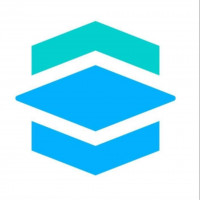Unraveling LAMP and MERN: The Full Forms and Significance of These Powerful Tech Stacks

Strong 8k brings an ultra-HD IPTV experience to your living room and your pocket.
In the ever-evolving world of web development, certain technology stacks have emerged as industry favorites. Two such popular stacks are LAMP and MERN. But what do these acronyms stand for, and why are they so widely used? This comprehensive guide will delve into the full forms of LAMP stack and MERN stack, exploring their components, advantages, and use cases. Whether you're a seasoned developer or just starting your journey in web development, understanding these stacks is crucial for making informed decisions about your tech stack choices.
Before we dive deeper, it's worth noting that while LAMP and MERN are our main focus, there are other similar stacks like MEAN stack that developers should be aware of. Additionally, for those specifically interested in MERN, you can find more detailed information about the MERN Stack Full Form and its components. Now, let's unpack these powerful tech stacks and understand why they've become go-to choices for developers worldwide.
The LAMP Stack: Illuminating Web Development
LAMP Stack Full Form: Breaking Down the Acronym
LAMP is an acronym that stands for Linux, Apache, MySQL, and PHP. This open-source web development stack has been a cornerstone of web development for over two decades. Let's break down each component:
- L - Linux: The operating system that serves as the foundation of the stack.
- A - Apache: The web server software that handles HTTP requests.
- M - MySQL: The relational database management system.
- P - PHP: The server-side scripting language (though Python or Perl can also be used).
The Power and Popularity of LAMP Stack
The LAMP stack has stood the test of time for several reasons:
- Open-source nature: All components are free and open-source, reducing costs.
- Stability and reliability: These technologies have been refined over many years.
- Large community support: Extensive documentation and resources are available.
- Flexibility: Components can be swapped or upgraded as needed.
Use Cases for LAMP Stack
LAMP stack is versatile and can be used for various web applications:
- Content Management Systems (CMS) like WordPress
- E-commerce platforms
- Custom web applications
- Blogs and personal websites
The MERN Stack: Modern Web Development Unleashed
MERN Stack Full Form: Decoding the Acronym
MERN is a more recent stack that has gained significant popularity in the last decade. It stands for:
- M - MongoDB: A NoSQL database
- E - Express.js: A web application framework for Node.js
- R - React: A JavaScript library for building user interfaces
- N - Node.js: A JavaScript runtime built on Chrome's V8 JavaScript engine
The Strengths of MERN Stack
The MERN stack offers several advantages that make it a favorite among modern developers:
- JavaScript everywhere: Use one language across the entire stack.
- High performance: Node.js is known for its speed and efficiency.
- Flexible and scalable: MongoDB's document-oriented structure allows for easy scaling.
- Rich user interfaces: React enables the creation of dynamic and responsive UIs.
When to Choose MERN Stack
MERN stack is particularly well-suited for:
- Single Page Applications (SPAs)
- Real-time applications like chat apps or collaboration tools
- Social media platforms
- Data-intensive applications
Comparing LAMP and MERN: Choosing the Right Stack
LAMP vs MERN: Key Differences
While both LAMP and MERN are powerful stacks, they have some fundamental differences:
- Language: LAMP uses PHP (or Python/Perl) while MERN is JavaScript-based.
- Database: LAMP uses MySQL (relational) while MERN uses MongoDB (NoSQL).
- Server: LAMP relies on Apache, while MERN uses Node.js with Express.
- Frontend: LAMP doesn't specify a frontend technology, while MERN uses React.
Factors to Consider When Choosing Between LAMP and MERN
When deciding between LAMP and MERN, consider the following:
- Project requirements: What type of application are you building?
- Team expertise: Which technologies is your team more comfortable with?
- Scalability needs: How much do you expect your application to grow?
- Performance requirements: What level of performance does your app need?
Deep Dive: Components of LAMP Stack
Linux: The Solid Foundation
Linux, an open-source operating system, provides a stable and secure environment for web servers. Its key advantages include:
- Cost-effectiveness
- Security
- Flexibility and customization
- Stability and reliability
Apache: The Reliable Web Server
Apache HTTP Server is the world's most used web server software. It's known for:
- Robustness and stability
- Extensive module support
- Cross-platform compatibility
- Excellent documentation and community support
MySQL: The Popular Database
MySQL is a widely-used relational database management system. Its strengths include:
- Speed and performance
- Scalability
- Data security
- Ease of use
PHP: The Versatile Scripting Language
PHP (Hypertext Preprocessor) is a server-side scripting language designed for web development. It offers:
- Simplicity and ease of learning
- Wide range of frameworks
- Extensive library support
- Strong database integration
In-Depth Look: Components of MERN Stack
MongoDB: The Flexible NoSQL Database
MongoDB is a document-oriented NoSQL database. Its key features include:
- Flexible schema design
- Horizontal scalability
- High performance for large volumes of data
- Native support for JavaScript Object Notation (JSON)
Express.js: The Web Application Framework
Express.js is a minimal and flexible Node.js web application framework. It provides:
- Robust set of features for web and mobile applications
- Fast and unopinionated framework
- HTTP utility methods and middleware
- Great performance
React: The User Interface Library
React is a JavaScript library for building user interfaces. Its strengths include:
- Component-based architecture
- Virtual DOM for improved performance
- Unidirectional data flow
- Strong community and ecosystem
Node.js: The JavaScript Runtime
Node.js allows running JavaScript on the server. Its advantages include:
- Asynchronous and event-driven
- Fast execution
- Single language across stack
- Large ecosystem of packages via npm
Choosing Between LAMP and MERN: Real-World Scenarios
When to Use LAMP Stack
Building traditional server-rendered websites
- Working with relational data that requires complex queries
- Developing content management systems
- You have a team experienced in PHP and MySQL
When to Opt for MERN Stack
MERN stack could be more suitable when:
- Developing single-page applications
- Building real-time applications
- Working with large volumes of unstructured data
- You want to use JavaScript throughout your stack
Future Trends: The Evolution of LAMP and MERN
The Continuing Relevance of LAMP
While LAMP has been around for a long time, it continues to evolve:
- PHP 8 brings significant performance improvements
- MariaDB as an alternative to MySQL
- Integration with modern frontend frameworks
The Growing Ecosystem of MERN
MERN stack is rapidly evolving with:
- Server-side rendering capabilities in React
- Improved performance in Node.js
- New features and scalability improvements in MongoDB
Getting Started: Learning LAMP and MERN
Resources for Learning LAMP Stack
To start your journey with LAMP, consider:
- Official documentation for each component
- Online courses on platforms like Coursera or Udemy
- Books like "PHP and MySQL Web Development" by Luke Welling and Laura Thomson
Resources for Mastering MERN Stack
For MERN stack, explore:
- The official websites of MongoDB, Express, React, and Node.js
- Online tutorials and courses on platforms like freeCodeCamp
- Books such as "Full-Stack React Projects" by Shama Hoque
Conclusion: Embracing the Power of LAMP and MERN
Understanding the full forms of LAMP stack and MERN stack is just the beginning. These powerful technology stacks have revolutionized web development, each offering unique strengths and capabilities. LAMP, with its time-tested components, continues to be a reliable choice for a wide range of web applications. On the other hand, MERN, with its JavaScript-centric approach, is paving the way for modern, dynamic web applications.
As you progress in your development journey, remember that the choice between LAMP and MERN isn't always an either-or decision. Many projects can benefit from a hybrid approach, leveraging the strengths of both stacks. The key is to understand your project requirements, team capabilities, and long-term goals when making your choice.
Whether you choose LAMP, MERN, or a combination of both, you're equipping yourself with powerful tools to bring your web development ideas to life. So dive in, experiment, and let your creativity flourish with these robust technology stacks!
Note: IndiBlogHub features both user-submitted and editorial content. We do not verify third-party contributions. Read our Disclaimer and Privacy Policyfor details.


